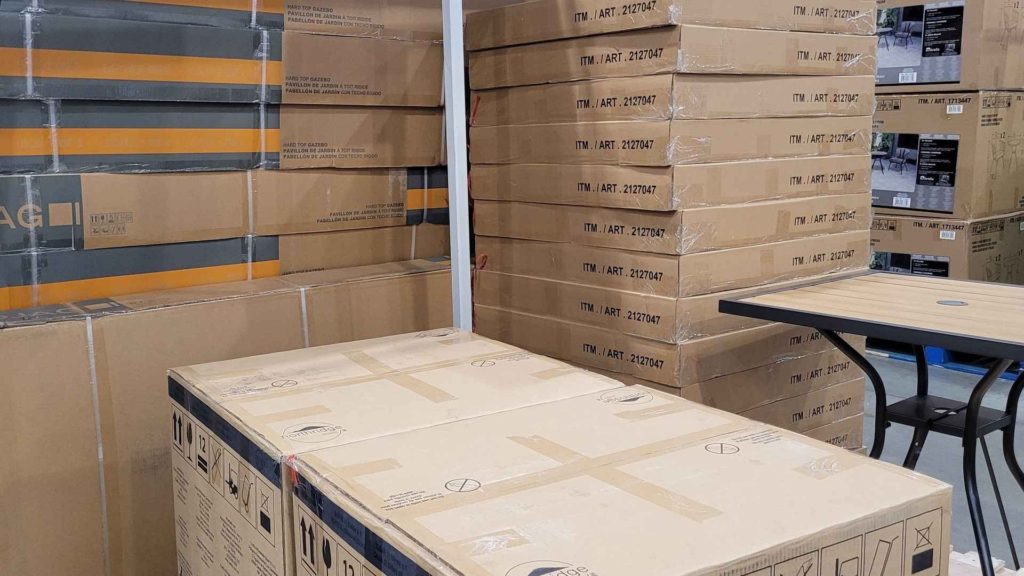How to prepare your warehouse for a big move?
Moving is already tough, but moving a large warehouse? Even tougher. You probably have hundreds of pallets to worry about, along with setting up shelves, warehouse equipment, and offices. But as with any move, preparation is key. In this article, we’ll walk you through 12 tips to ensure your move is a success. Let’s get started. How to prepare your warehouse for a big move?
12 Tips to prepare your warehouse for a big move
1. Establish a comprehensive plan
Start by developing a detailed plan that covers all aspects of your move. Identify tasks, assign responsibilities to each team member, and set clear deadlines. Determine whether you’ll hire a commercial moving company or handle the move in-house. A well-designed plan will be your compass throughout this journey.
2. Manage your inventory carefully
Conduct an inventory before the move. Count how many pallets you have, how many desks, and all other warehouse spaces that need to be moved. Take this opportunity to dispose of obsolete or damaged inventory, simplifying the moving process and reducing costs. An accurate inventory will also help prevent losses during the move.
3. Ensure you have the right equipment
Having the right equipment is crucial for a smooth move. An electric pallet jack or forklift is essential for safely and efficiently moving heavy loads. Additionally, hand trucks and moving carts are necessary for moving smaller items and boxes. You may already have these in your warehouse, or you may need to purchase or rent them.
If you choose to handle the move yourself, you’ll also need other moving equipment, including stretch wrap to secure loads, blankets to protect furniture, straps, gloves, and safety equipment to protect your team.
4. Label with precision
You must clearly label each box, piece of equipment, and furniture item. Labels should indicate not only the contents of each item but also their destination in the new warehouse. This will greatly facilitate the unloading and organization process upon arrival.
5. Update your address
Don’t forget to update your address on all legal documents, your website, business cards, and other marketing materials. Also, inform your suppliers and customers of the address change to avoid any confusion or service interruption.
6. Disassembly and reassembly of shelving systems
Before the move, plan for the disassembly of shelving systems in your old warehouse. Whether this task falls to you or the building owner depends on your arrangement. This task must be carried out carefully to avoid damaging components that will be reused in the new facility.
Allocate enough time and resources to this process, and consider hiring specialists if the shelving systems are complex. Once in the new warehouse, reassemble the shelves according to a preconceived plan that optimizes space and efficiency.
7. Transporting forklifts and heavy machinery
If forklifts are part of your warehouse equipment, organizing their transport is also essential. Forklifts typically require a flatbed transport trailer, meaning they can’t simply be loaded onto the same truck used to move pallets. Hire a specialized transport service for heavy equipment and let them handle this task at the end of the day once everything else is already moved.
8. Clean and repair
If you’re renting your current warehouse, you may be required to leave it in good condition at the end of your lease. Take the time to clean and repair any damaged infrastructure. This step can prevent issues when recovering deposits or during final inspections.
9. Communication plan
Develop a clear communication plan that keeps all team members and stakeholders informed throughout the move. This should include regular updates, meetings, and a point of contact for any issues that arise. Effective communication can prevent misunderstandings and keep the move on track.
10. Choose the right timing
The timing of your move can significantly impact its success. Consider slower business periods and check the weather forecast to choose the best day for the move.
11. Safety first
Prioritize safety during the move. If you’re handling the move yourself, ensure all staff are trained in safety procedures and that heavy equipment like pallet jacks and forklifts are operated only by qualified personnel. This prevents injuries and property damage.
12. Consider professional help
Depending on the size and complexity of the move, it may be wise to hire professional movers. They can handle lifting heavy objects, providing peace of mind and reducing the risk of costly mistakes.
For efficient warehouse moving solutions, consider the services of Demelina Moving Company. We have the experience and equipment necessary for a smooth warehouse relocation. Whether you’re in Montreal, Quebec, Ontario, Toronto, New Brunswick, Halifax, or anywhere in Canada, our commercial moving services are designed to meet your specific needs.
We specialize in last-minute moves without increasing the price and in luxury moving services for those seeking a premium experience. Whether you need to move your warehouse on a tight schedule or are looking for premium service, we’re here to meet your needs.
Our movers are carefully selected and trained to ensure professional and efficient service at every step of the process. They’re both professional and affordable, meaning you get quality service at an affordable price.
With us, you can rest assured that your warehouse move will be handled by a competent team, regardless of the level of urgency or sophistication you require.
Conclusion
While preparing for a warehouse move may seem daunting, by following the steps outlined, you can make it manageable. Be sure to create a plan, conduct a detailed inventory, acquire the right equipment, and prioritize safety. With careful planning and execution, your warehouse move will go smoothly, allowing you to settle in quickly and resume your normal operations.
